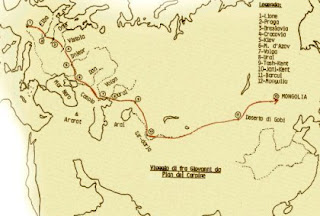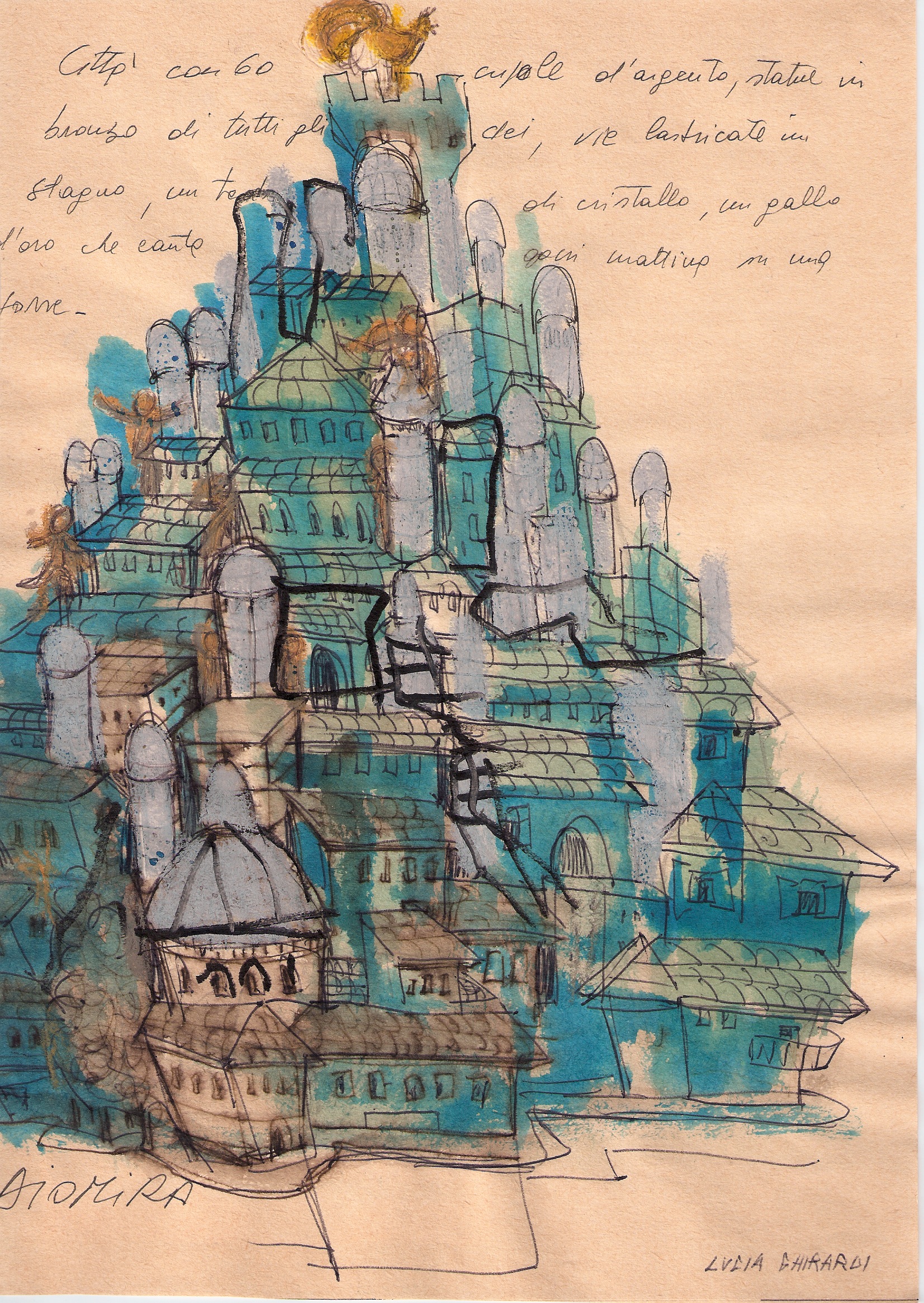How young Temujin met Borte, from
Yuan Ch’ao Pi Shih, the Secret History Of The Mongols (Paul Kahn's translation, found
here):
That year, when Temujin was nine,
Yesugei decided to take him to visit his mother’s tribe, saying:
“I’ll ask for a girl from his mother’s tribe to marry him.”
On their way to the Olkhunugud tribe they met an Ungirad man, Dei the Wise,
camped between Mount Chegcher and Mount Chikhurkhu.
Dei the Wise addressed Yesugei as if they were related by marriage:
“My friend Yesugei, travelling so far,
who are you going to see?”
“I’m on my way to the Olkhunugud,
the tribe of this son of mine’s mother,
to find a girl for him there,” he replied.
Dei the Wise said to him:
“I look at your son and I see
his eyes contain fire,
his face fills with light.
My friend Yesugei, I had a dream last night.
A white falcon holding the Sun and the Moon in its claws
flew down from the sky and lit on my hand.
I told my family this, saying:
‘Whenever I saw the Sun or the Moon in my dreams before
it was always from a distance.
Now this falcon, taking them in his claws,
has brought them both into my hand.
The bird was all white and it brought them to me.
What does this good omen mean?’ I asked.
My friend Yesugei,
I had this dream the very moment you were leading your son to our camp.
What could it mean?
Obviously it was a sign that a nobleman like yourself would come to our camp.
Since the days of old we Ungirad have been protected by the beauty of our daughters,
by the loveliness of our granddaughters,
and so we’ve stayed out of battles and wars.
When you elect a new khan,
we take our loveliest daughters and place them on carts.
Harnessing a black camel to the cart,
we have him trot off to the khan’s tent.
We offer our daughters to sit there beside him and be his khatun.
We don’t challenge empires;
we don’t go to war with our neighbors.
We just bring up our daughters and place them in the front of the carts.
Harnessing a black camel to the cart,
we lead them off to the khan’s tent.
We offer our daughters to sit by the khan,
and he places them up on the throne.
Since the days of old the Ungirad have had khatun as their shields.
We’ve survived by the loveliness of our granddaughters,
by the beauty of our daughters.
When one of our boys wants to marry
you can judge the wealth of our camp to decide if you want him.
But as for our girls you only have to look at their beauty.
My friend Yesugei, let’s go to my tent.
I’ve got a young daughter there.
My friend should meet her.”
Dei the Wise led Yesugei’s horse to his tent and helped him dismount.
When Yesugei saw Dei’s daughter he was impressed.
She was a girl whose face filled with light,
whose eyes filled with fire,
and he began to consider her father’s proposal.
She was ten years old, a year older than Temujin,
and her name was Borte.
After spending the night in the tent,
the next morning Yesugei asked Dei for his daughter.
“I could let you have her after awhile,
waiting for you to ask me again and again,
but who’d praise me for stalling?
I could let you have her right away,
just waiting for you to ask me twice,
and who’d curse me for replying too quick?
No, this girl’s fate is not to grow old by the door of the tent she was born in.
I’ll be happy to give you my daughter.
But now you should go,
and leave your son with me for awhile,
so we can get to know our new son-in-law.”
Both men gave their pledge to the other
and Yesugei added:
“I’ll leave you my son for awhile.
You should know that he’s frightened by dogs.
Don’t let the dogs frighten him, my friend.”
Then Yesugei offered his lead horse as a gift,
and leaving Temujin in Dei’s tent, he rode back to his people.
As he rode back Yesugei came on a camp of the Tatar,
who were feasting below Mount Chegcher on the Yellow Steppe.
Tired and thirsty, he dismounted to join in the feasting.
But the Tatar recognized who he was, and said to themselves:
“Yesugei of the Kiyan clan is among us here.”
They remembered the times he’d defeated them in battle.
Secretly they decided to kill him,
mixing poisons into the drinks he was offered.
On his way back he felt something was wrong
and after riding three days to get back to his tent
he knew he was dying.
Yesugei the Brave spoke from his bed, saying:
“I feel that I’m dying.
Who’s here beside me?”
Someone answered him:
“Munglig, the son of Old Man Charakha is here.”
Yesugei called the boy over to him and said:
“Munglig, my child, my sons are still very young.
As I rode back from leaving Temujin with his wife’s family
I was secretly poisoned by the Tatar.
I can feel that I’m dying now.
Take care of my sons like they were your own little brothers.
Take care of my wife like she was your own elder sister.
Go quickly now, Munglig, my child, and bring Temujin back.”
Then Yesugei passed away.
Following Yesugei’s last words Munglig went to Dei the Wise and said:
“My Elder Brother Yesugei’s heart aches
and he is constantly thinking of his son.
I’ve come to take Temujin back to him.”
Dei the Wise answered him:
“If my friend thinks so much of his son, I’ll let him go.
When he’s seen his father again, have him quickly come back.”
So Father Munglig brought Temujin back to his family.
Below - Chingis Khan looks over Sukhbaatar Square, Ulaanbaatar, flanked by Ogodei and Kubilai Khan. No Borte.

















